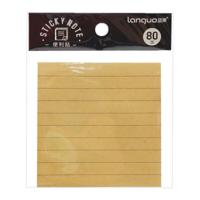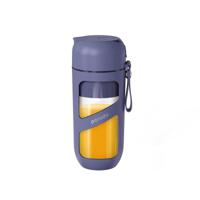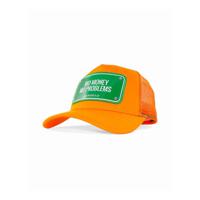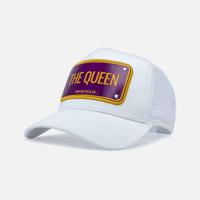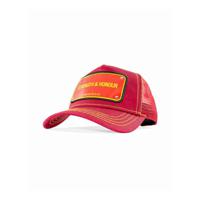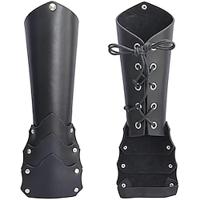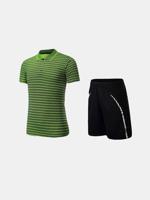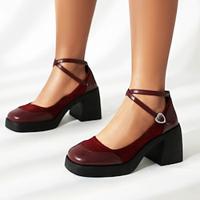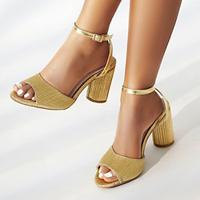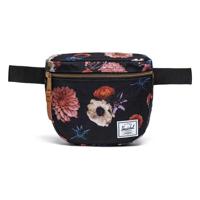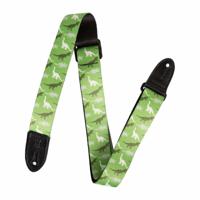48.-
25.44About Leg Guards
Horses have no padding from muscle tissues in the lower leg. It means that tender bones like splints, ligaments and tendons have no natural protection. Horse leg guards help protect the delicate structure of the leg from obstacles as well as own horse hooves.
In the meantime, there are many styles of leg guards for thin skins that protect and support the tendons and leg ligaments. No matter how light the workload is, some horses are prone to forging, interfering and injuries themselves. This is why each type available in the market addresses different problems of horses and sporting activities. Here, the point to note is that manufacturers do not use the same names to describe all boots. Meanwhile, different brands incorporate different sets of functions in their boots. What remains common is the ticker padding inside these leg joint protectors that help your horse stay safe and perform well. Today we will discuss some of the common types and features of leg guards available in the market and how they can be helpful for your horse.
All about protective leg guards for horses
You may have seen horses wearing leg protection. Have you ever wondered what the purpose or safety is? Although in some instances they are called “boots” they don’t serve the said purpose. Instead, they protect the delicate structure of the horse’s leg from bumps and hooves. No matter what type you pick for your horse, it must fit well. Experts suggest chaffing these guards in case of chaffing or any other type of damage. Commonly built-up sweat, dust and grit can make them uncomfortable and can cause damage to the delicate skin of the horse. With these basic tips of care, now let’s explore the possibilities a horse owner can consider.
The bell boots
These boots circle the pastern, whereas the bell shape covers the hoof area. Generally, they are made of rubber, leather with fleece lining or heavy synthetic material. Usually, these boots are worked in the paddock, stall or while ridden. In any case, they prevent the horse from self-hurting. They are more reliable when the terrain is muddy and rough or where the horse is negotiating obstacles like jumping. It also offers protection from hitting a hard surface. On the other hand, the fetlock ring helps in preventing the horse from injuring its hind fetlocks. This is because these simple rubber doughnuts ring stretch over the hoofs and sit perfectly on the lower fetlock of the horse.
Brush, Brushing or Splint Boots
Splint boots or brush boots are used on the front leg. They help in preventing the horse from hurting himself during hard work. Occasionally they are used on hind legs as well. They are commonly used during lunging and canter work. Plus, they are a must for activities like jumping, reining or any sort of fast-moving is involved. Or where there are chances for the horse to hit its leg with a hoof. These boots sit on or above the pastern joint and secure the lower bones as well as soft tissues in the lower legs. These boots come with thicker padding on the boot that protects fragile splint bone along the inside of the cannon bone of a horse. Generally, they are made of synthetic material or leather.
Open front boots and leg wraps
Open leg boots are another common type of horse guard. These boots are used when the rider wants the horse to feel when hitting a jump. Some horses become smug and scrub over the rails of jumps. An open front boot can encourage these horses to be more honest about tucking their knees upward and clearing the obstacles while offering some protection. In the meantime, the open front boots also offer better airflow around the lower leg. On the other hand, leg wraps are the oldest type of boots used for horse leg protection. Also known as polo wraps, these are the most common types of standing and riding bandages used in a stable.
The sports medicine boots
This type of boots offers both support and protection side by side. They cover the lower let, back and front from the pastern to below the knee area. However, they are not as padded as the splint styles. Even then, they offer impressive support to the ligaments and tendons. You can commonly see them on endurance or jumper horses as well as others that are meant to ride tough terrains. Traditionally they are made of high-quality leather or highly processed synthetic materials. Sometimes you can find them in materials specifically designed to retain heat. This property helps when the horse feels increased blood flow to the leg (generally due to extreme physical activity like competitive running).
Tips on how to buy Leg Guards online in the UAE
As you browse through catalogue pages, websites, and aisles of your favourite horsey stores, you will find a myriad of leg protection options for your horse. Here you can follow any of the two trends. You can either pick the hottest sellers for your fashionable or trendy in-crowd. Or you can be sensible and mature to think about what is suitable for you and the best fit for your horse. A mature mindset will help you find a reliable option and lead you to offer all the required protection to the horse. Today, the leg protection options vary based on age, fitness level, discipline and weather conditions. However, in any case, below is the list of tips that can help you make the best buying decision.
- What to protect – Some horses meddle with themselves while others get clumsy to cross a hurdle in the race. Therefore, start with understanding the horse’s attitude and find for what reason you will need a new adjustable leg guard. Your needs and horse’s attitude will determine the type of boot.
- The material of guard – Decades ago, these leg guards were in leather. However, with time it became an expensive item for many. Plus, it demands comprehensive care and maintenance. If this is not your cup of tea, consider other options like synthetic, inexpensive easy-care materials like Neoprene or PVC.
- The cleaning process – Few of us wish to spend hours after rid of labouring over the equipment. This is where easy cleaning of equipment comes to save. Materials like leather demand oiling and cleaning with a lot of energy and time. But neoprene can be hosed off along with the horse plus it dries quickly. Considering a less time-consuming material is always a great idea.
- The fit of boots – These boots are available in three sizes; small, medium, and large. Here a small boot is for a horse that is 14-15 hands tall, and the medium is for 15-16 hands tall and the larger is for a horse with 16.1 or more. Only the right fit will serve the purpose. Both larger and smaller sizes will be dangerous for the horse and rider side by side.
The horse leg guards or boots work in a similar pattern as the shoes or leg guards for humans. These add comfort, keep the skin, muscles, and joints safer. Plus, they take part in enhancing the performance of the horse, hence serving the rider. It is important to find a suitable option according to the discipline and nature of your horse. With the right supplier, you can find thousands of opportunities to explore, compare and buy from. However, important is to buy from a trusted brand that offers cheap leg guards to buy online.
Question & Answer
What is a leg guard?
Horses have soft skis, muscles and ligaments. Specifically, the lower leg area of the horse is vulnerable to damage and injuries of many different types. It is thus important to add protection to keep the performance up and avoid any avoidable injuries. A horse guard is a particular type of cover or boot that offer all the protection. These guards have a durable outer coating with a soft inner coating to offer optimum protection to the horse while riding.
How to measure leg guards?
It is important that the horse boot or guard perfectly fit the horse. To measure the horse’s leg, simply start by measuring the circumference of the cannon bone at the midpoint. Now proceed with following the size guides given on the manufacturer’s website. These online guides and charts give you easy measurements and sizes of different products. Remember your horse size will ultimately fall under any three categories; small, medium, and large. Here a small size boot is for a horse that is 14-15 hands tall; medium is for 15-16 hands tall and larger is for a horse with 16.1 or more.
Are leg guards expensive?
The price of a leg guard cost depends on the material and type of boot you wish to buy. It also depends on the brand you wish to purchase. On average speaking, you can find extremely luxurious as well as cheap yet best leg guards to buy in online stores. Generally, leather made options are expensive. Whereas other options come with various prices starting from $70 to $1000 or more. To deal with such price fluctuations better is to set a realistic price limit and look for a product within your settled window.
Where to buy leg guards?
Here at Shops.ae you can find more than 500 sports and outdoor brands manufacturing and offering leg guards for sale online globally. Customers trust these brands for their supreme quality horse riding products and economical prices. Some of the brands to mention here are; Dyon, Evoshield, Easton, Wilson, and Horze. Plus, here you can compare prices of products from these brands and make economic buying decisions without wasting much of your precious time and energy.
Plus you can explore stores the world trust to buy from and order all types of horse riding items you need for your beloved pet.




